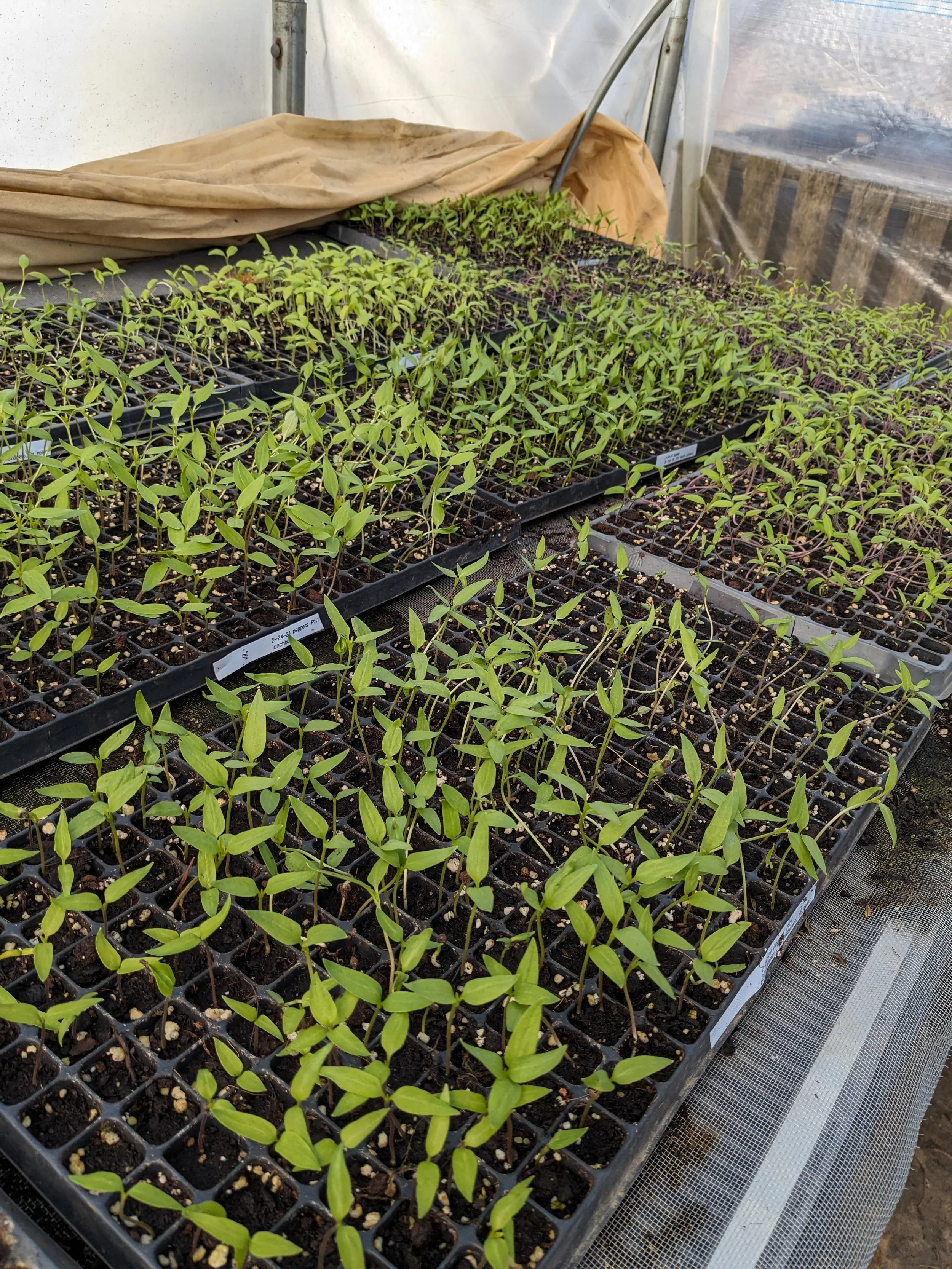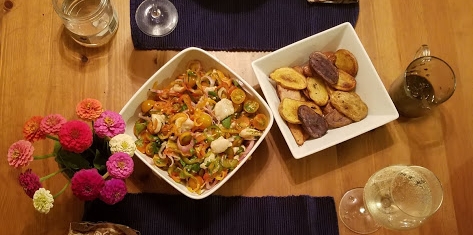Our cute set up at Chilibrew last night
Cool Temps
This wet, humid week dissolved into fall temperatures, finally! We had a big week of selling fall produce by day and making chili by night. And our efforts paid off with a 3rd place trophy - Best Meat Chili - Judges’ Choice! It was a fun way to spread the word about our awesome produce and to get folks excited about chili peppers. And we’re headed toward more clean up, cover crop seeding, and garlic planting. Plus, we’ll start harvesting sweet potatoes the week, which we’re both excited about! Unfortunately we’ve had a bit of a tough year for sweet potatoes: lots of deer damage and water damage. But the ones who survived are bound to be delicious! We’ll harvest them, then let them cure so that their starches transform into sugars. Yum! Can’t wait. Once they’re ready, we’ll spill the beans on our delicious Sweet n’ Smoky vegetarian chili that got lots of love at Chilibrew last night!
A block of our cover crops looking bright and cheery
What We’re Eating
Butternut Lentil Salad
This salad is simple and delicious! Perfectly captures fall flavors and farm-y goodness.
From the awesome recipe blog The First Mess
dressing:
juice of 1 lemon (about 1/4 cup)
2 tbsp agave nectar
salt and pepper
1/3 cup extra virgin olive oil
salad:
1 small butternut squash, peeled
1 cup green lentils, picked through and rinsed
5-6 handfuls arugula
1/4-1/2 cup crumbled feta cheese
salt and pepper
Cook the lentils: combine the rinsed lentils with 3 cups of water and a pinch of salt in a medium saucepan over medium-high heat. Bring to a boil and simmer for 15 minutes or until lentils are just tender and most of the liquid is absorbed. Stir here and there while they’re cooking. Set aside when done.
Steam the squash: fill a large pot with an inch or two of water and bring to a boil. Cut the peeled squash in half lengthwise. Scoop out the seeds and slice both halves into 1/2 inch slices crosswise. Place slices on a steamer basket and drop into the pot of boiling water. Cover and steam for about 15-20 minutes or until squash is tender, but still has a little toothsome quality.
Make the dressing: combine all dressing ingredients in a blender and blend on high until combined. Set aside. You could whisk them all together too.
Assemble: toss the lentils and arugula with 3/4 of the dressing. Season with salt and pepper. Place this mixture onto your serving plate. Top with the cooked squash slices. Pour remaining dressing over top. Sprinkle the top with feta and serve.
Bryan with his trophy!
Have a great week everybody - stay cozy!
Joanna & Bryan










































